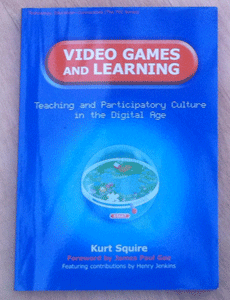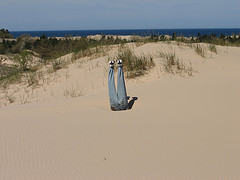The other day Howard Rheingold asked me a question that made me stop and think:
@eingang Would you say Open University UK is the grandmother of today’s emerging p2p learning communities?
April 11, 2011 @17:20, Howard Rheingold.
The Open University (OU) started off in distance education, providing accredited university level courses in the United Kingdom starting in 19711. I didn’t join the OU until 2000 when they launched their first online course: T171, You, Your Computer, and The Net. Unlike earlier OU courses, this course required substantial online interaction between students and tutors. Even the assignments were submitted electronically. The whole course, however, was not completely online. It was more of a blended learning approach, as it featured high production quality printed booklets of the study materials, commercial books, and some face-to-face tutorials across the 9-month course, in addition to the forums and course website.
One thing it did attempt to do, and that is evident still in the design of many of today’s OU courses, is encourage students to form a peer learning community. At the time, it did this through FirstClass forums, not just by providing the previously isolated distance education students with forums they could use for communication, but by setting assignments that required students to engage in dialogue with one another. This is a beautiful example of Brown & Adler’s social view of learning (2008), where understanding is socially constructed by members of the group interacting with one another, to share and build upon their existing knowledge. Vygotsky and Dewey would have approved, as this fits in with a constructivist approach to learning, something that is also often very evident in OU courses.
Is a peer learning community the same as a peer-to-peer learning community? I am not so sure about that. However, an example of such a community that occurs to me is Livemocha, a language learning website. Livemocha capitalizes on social knowing by bringing together potential teachers (native speakers) with interested learners to facilitate learning practical, conversational language skills (Livemocha 2011). This also leverages social capital, an important component in maintaining social networks. I would say Livemocha is both a peer-to-peer learning community and a peer learning community, because it specifically seeks to make relationships between people as well as providing an overall, larger community sphere where legitimate peripheral participation (c.f. Lave & Wenger 1991) can occur.
Is the OU a peer-to-peer learning community? I think their “traditional” courses—whether online or offline—probably are not. While we are attempting to form communities, we’re not trying specifically to make them peer-to-peer, although that can occur as a result of people being brought together in a community around a course or a tutor group. To be honest, even after doing this bit of thinking, I’m not sure, so I thought I’d ask for input from other members of the OU community. What do you think? Is the OU the grandmother of peer-to-peer learning communities?
1: Although the OU was established in 1969, the first students weren’t enrolled until 1971 (The Open University n.d.).
References:
Brown, J.S. & Adler, R.P. (2008). ‘Minds on Fire: Open Education, the Long Tail, and Learning 2.0’ EDUCAUSE Review, 43 (1), [Online] Available from: http://connect.educause.edu/Library/EDUCAUSE+Review/MindsonFireOpenEducationt/45823 (Accessed April 18, 2011).
Lave, J. & Wenger, E. (1991). Situated Learning: Legitimate Peripheral Participation. New York, NY, United States, Cambridge University Press.
Livemocha (2011). Livemocha Language Learning Method, [online]. Available from: http://www.livemocha.com/language-learning-method (Accessed April 18, 2011).
The Open University (n.d.). History of the OU, [online]. Available from: http://www8.open.ac.uk/about/main/the-ou-explained/history-the-ou (Accessed April 18, 2011).














